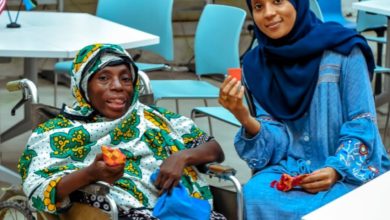Bridges and water: How TASAF is connecting communities

BUKOBA: ON a sunny morning in Bukoba – a small city which Professor Anna Tibaijuka once called it ‘Rio de Janeiro of Africa’, children with satchels slung across their shoulders race toward Kiteyagwe Primary School.
Their laughter carries across the valley, mingling with the rushing sound of a seasonal stream below.
What was once a treacherous crossing—where slippery stones and sudden floods often stood between pupils and their classrooms—has been transformed into a sturdy pedestrian bridge, built by local beneficiaries of the Tanzania Social Action Fund (TASAF).
This modest span, worth just 3.4m/-, is more than concrete and iron bars.
It is a lifeline. Parents speak of their relief, teachers of improved attendance and children of the simple joy of reaching school without fear.
For them, the bridge is not an object; it is hope given shape, cement transformed into a promise.
A Journey through Bukoba
The bridge at KagondoKaifo Street is only one stop on a two-day journey undertaken by Dr Charles Mwamaja, a member of the National Steering Committee (NSC) for TASAF.
From August 21–22, 2025, Dr Mwamaja crisscrossed Bukoba Municipality, accompanied by TASAF officials and local leaders.
Their mission was to assess the progress of the Productive Social Safety Net (PSSN II) project, which is now approaching its final chapter.
Everywhere he went, the story repeated itself in different accents and landscapes: Communities building, saving, dreaming—and using TASAF not just as a safety net, but as a springboard to help them jump further.
ALSO READ: TASAF allocates 68.6bn/- to vulnerable families
In Lubumba Street, another pedestrian bridge stretches across a once-isolating gap, linking residents to the District Hospital.
Before, patients trudged nearly four kilometres around obstacles to reach medical care. Today, the journey has shrunk to one kilometre.
A mother carrying a feverish child can now reach doctors in minutes, not hours.
The bridge is an artery of survival, pumping life into a community once cut off from its own healthcare.
Conserving life’s source
The bridges are only part of the picture. Across Kalelabana Street, residents have worked with TASAF to conserve a local water source that was at risk of depletion.
Through careful investment and community effort, the project now ensures a steady supply of water for households and small farms.
The water source, once fragile, has become a wellspring of resilience—an essential thread connecting the community to health, hygiene and livelihood.
“These projects—bridges, wells and water conservation—are all connected,” Dr. Mwamaja said.
Mbeta: “They are about linking people to services, to each other and to a future they can shape with their own hands.” Bridges, wells and savings: Symbols of resilience To the casual observer, these may seem like simple infrastructure projects.
But to those who cross the bridges or draw water from the conserved springs, they are cathedrals of resilience.
Each plank, each protective barrier and each bucket drawn from a well tells the story of evenings spent labouring together, of neighbours pooling effort as they once pooled coins for their savings groups.
Across the six streets visited—Kagondo-Kaifo, Lubumba, Kalelabana, Katatolwanso, Kamizilente and Rwome—communities have built pedestrian bridges, protected water sources, planted mango trees and formed savings groups that have accumulated substantial funds.
Dr Mwamaja personally supported these initiatives by donating 200,000/- to 500,000/- to various groups, strengthening their financial base and encouraging members to continue saving in secure ways.
Some savings groups have already amassed millions of shillings, proving that collaboration can transform survival into opportunity.
The combination of infrastructure, savings and community effort underscores TASAF’s holistic approach: Development that is practical, participatory and sustainable.
Connecting more than roads
Bukoba’s bridges, wells and savings groups remind us that TASAF is not merely distributing grants or supervising projects. It is stitching together the torn fabric of community life. It is narrowing the distance between
poverty and possibility.
It is, quite literally, building bridges—not only over streams and gullies, but across generations, across fears and across the long-standing divide between need and dignity.
As the PSSN II project approaches its conclusion, the bridges and wells of Bukoba stand as testaments to what can be achieved when support meets determination.
They are humble structures, but they carry a weight far heavier than their beams.
They carry children to school, mothers to clinics, communities to safe water and hope into the hearts of generations yet to come.
And so, every step across a bridge, every bucket drawn from a protected water source and every coin safely stored in a savings group is more than a simple act—it is a reminder: Development is not a distant promise but a path underfoot, one plank, one well and one shilling at a time





